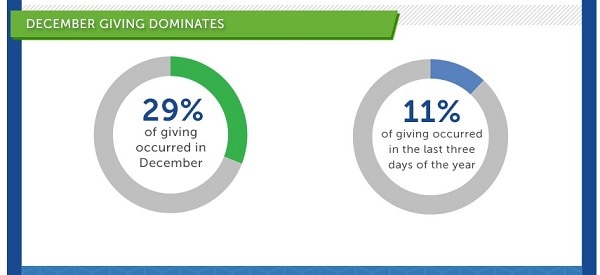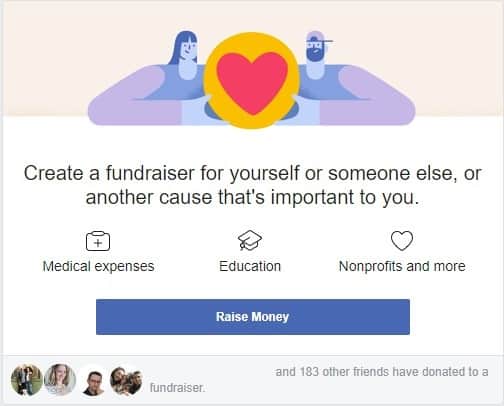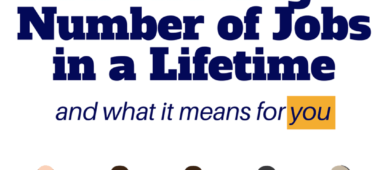As we near the end of the year, charities will make their big fourth quarter push to drum up contributions.
Many folks think about donations near the end of the year because it's a charitable time around the holidays. It's also the last time you can make a donation and deduct it from your taxes.
The Digital Giving Index, by the Network for Good, analyzes online giving trends and saw that 29% of annual giving occurs in December and 11% of annual giving occurs on the last three days of the year!

But what if you aren't financially set up to donate cash? Or you've already committed your funds for the year but still want to give?
There are ways to make noncash charitable donations that don't involve spending a dollar:
Volunteer Your Time & Expertise
This is the obvious first answer. You have a certain set of skills. Why not offer them to an organization?
You can always donate your time and volunteer to be another pair of hands. But you have valuable skills in something and an organization may be able to make use of them.
The upside is you can offer something not many people can. If you can donate that expertise, the organization doesn't have to hire someone, full time or part time, to fill that role.
The downside is that you cannot claim your hourly rate as a donation. If you're paid $50 an hour at work as an accountant, you can't “donate” that to an organization and claim a $50 per hour tax deduction. You can claim the travel mileage if you travel to volunteer but you can't claim the time itself.
“Donate” Your Birthday
You can donate your birthday on Facebook and ask your friends to contribute to a charitable cause (it doesn't have to be your birthday). If you're on Facebook, chances are you've seen this:
You can select from a Personal Cause or a Nonprofit one. The Nonprofit list is limited to the ones in their list of many causes (there is no public count). You set an amount to raise, an end date, a personal appeal and a photo.
Here are the instructions if you want to do this yourself.
Donate Items
Do you have gently used items in your home that you no longer need?
You could try to sell them on eBay or Facebook Marketplace… or you could donate them to Goodwill, the Salvation Army, or another charitable organization. If you have plenty of books, here are a few places that love getting book donations.
For larger items, like furniture, they may even bring a truck to pick it up so you don't have to find a way to deliver it.
If you do make a donation, make sure to get a receipt so you can document the donation for tax purposes.
If you want to donate something very large, like a car, there are a lot of organizations that will take it. Do a quick search of some of the organizations you like and see what their process is for car donations.
When you donate a car, you have a few options when you claim it on your tax return. If the charity sells the car, you can deduct the sale price from your taxes. If the charity uses the car, sells it at a significant discount, or otherwise disposes of it – you can claim the fair market value of the car based on Kelley Blue Book prices. Either way, get documentation from the organization.
Donate Gift Cards
Do you have a few gift cards you don't think you'll use? Consider donating them.
A gift card is considered a “cash equivalent” so it's treated like cash for donation purposes. If you donate a gift card to an organization, such as a raffle prize, get a receipt as you would if you donated cash. If you donate the gift card to an individual, they're likely not a 501(c)(3) and your donation would not be deductible.
Donate Blood
The American Red Cross never has as much red blood as they need. There is always a shortage.
Do you know who doesn't have a shortage? You.
According to the American Red Cross, you can donate every eight weeks when donating whole blood. Sixteen weeks if you make a Power Red donation, which is when you donate two units of red blood cells during one donation.
The donation process takes only 8-10 minutes. The intake process, which involves identification and a questionnaire, can take longer. Afterwards, you rest for 10-15 minutes to make sure you aren't light headed. They often give you cookies and a drink!
As for recovery, your body replenishes the plasma in your blood within 24 hours. The red blood cells are replenished in 4-6 weeks. If you're interested, check out or list of the highest paying plasma centers.
Register as an Organ Donor
You're going to die. Before you do, consider becoming an organ donor. Becoming an organ donor won't cost you anything and your organs can be used to save the lives of many others.
If you do want to become an organ donor, head over to OrganDonor.gov to find out how to do it.
It's possible to give without giving money if you're creative!




